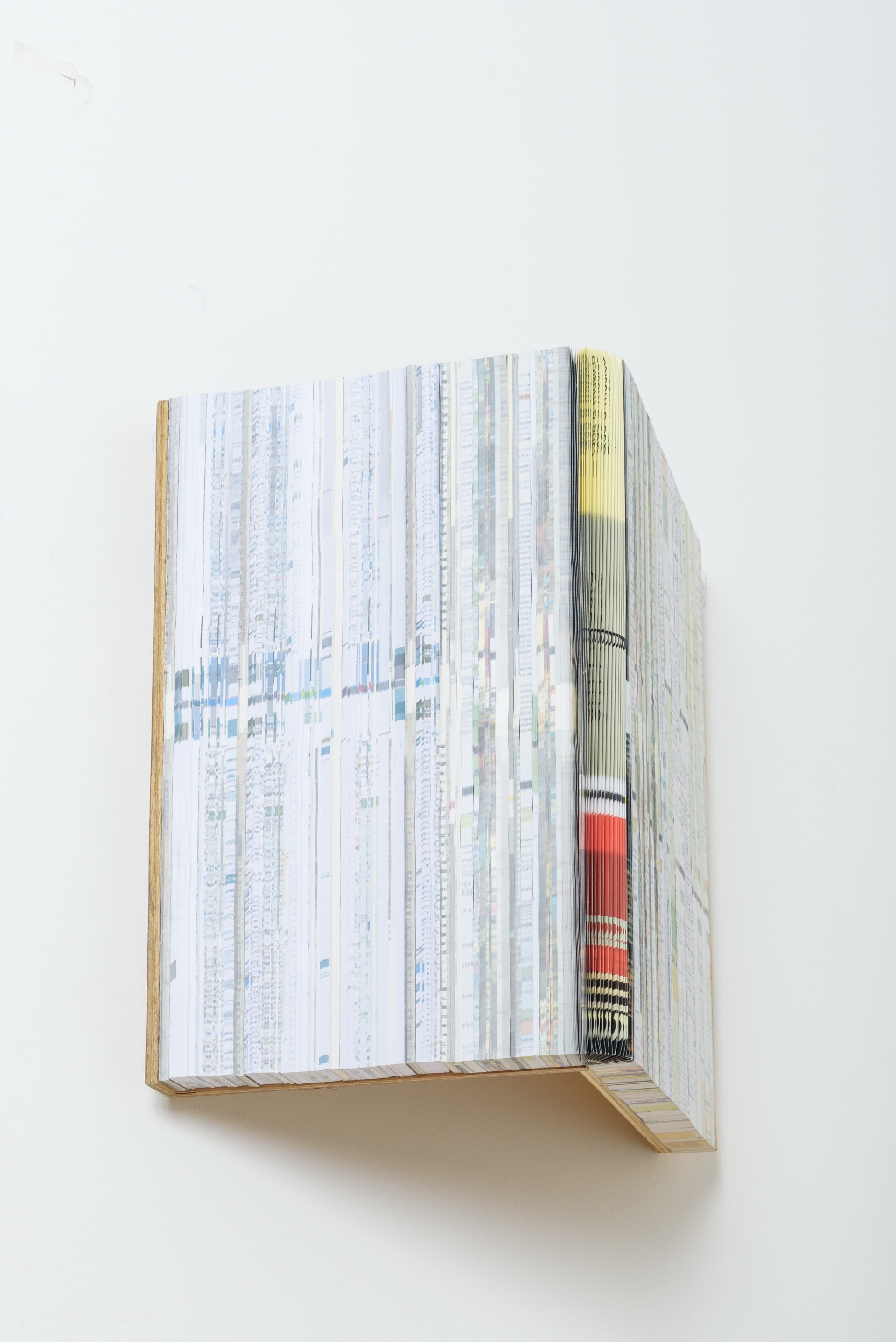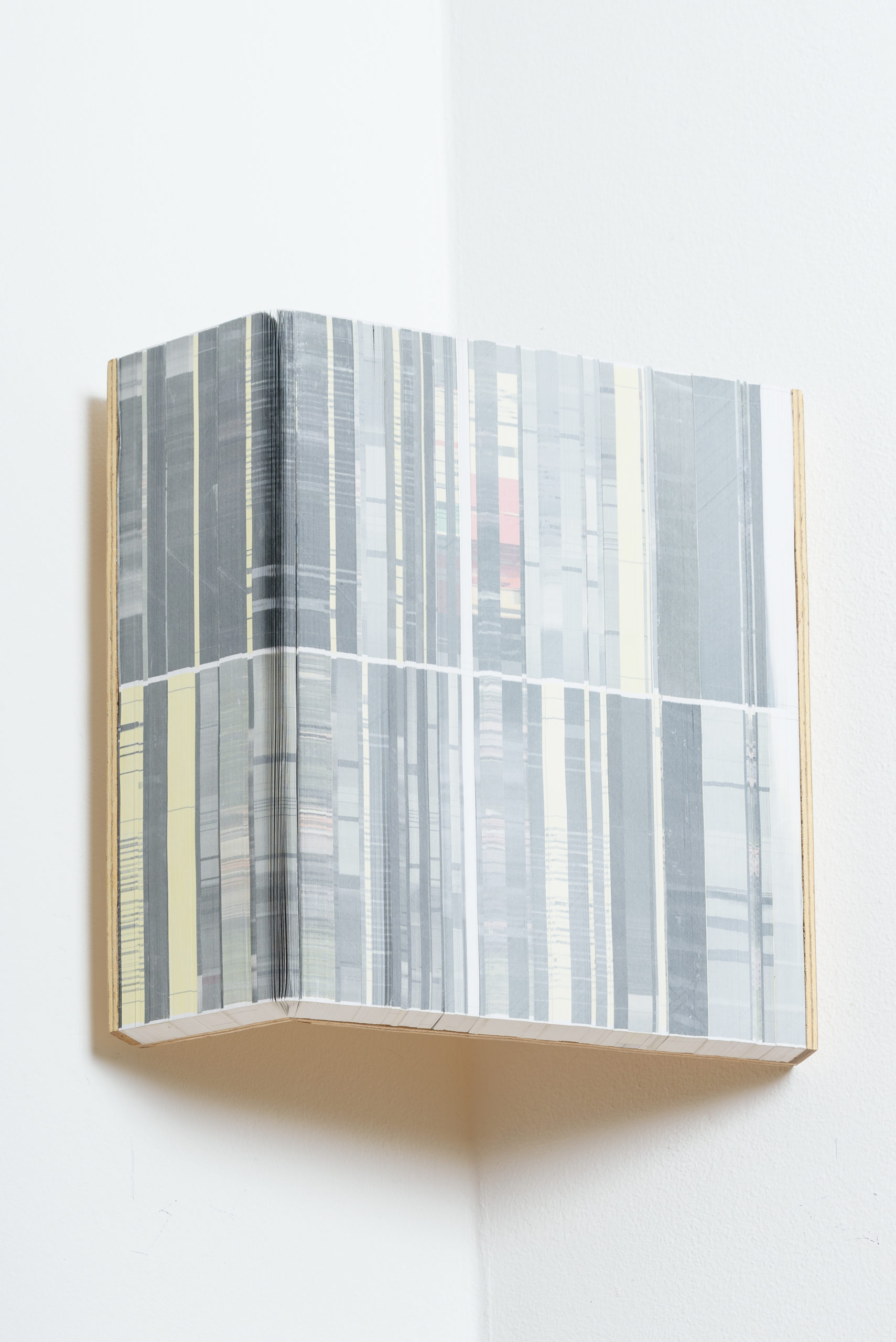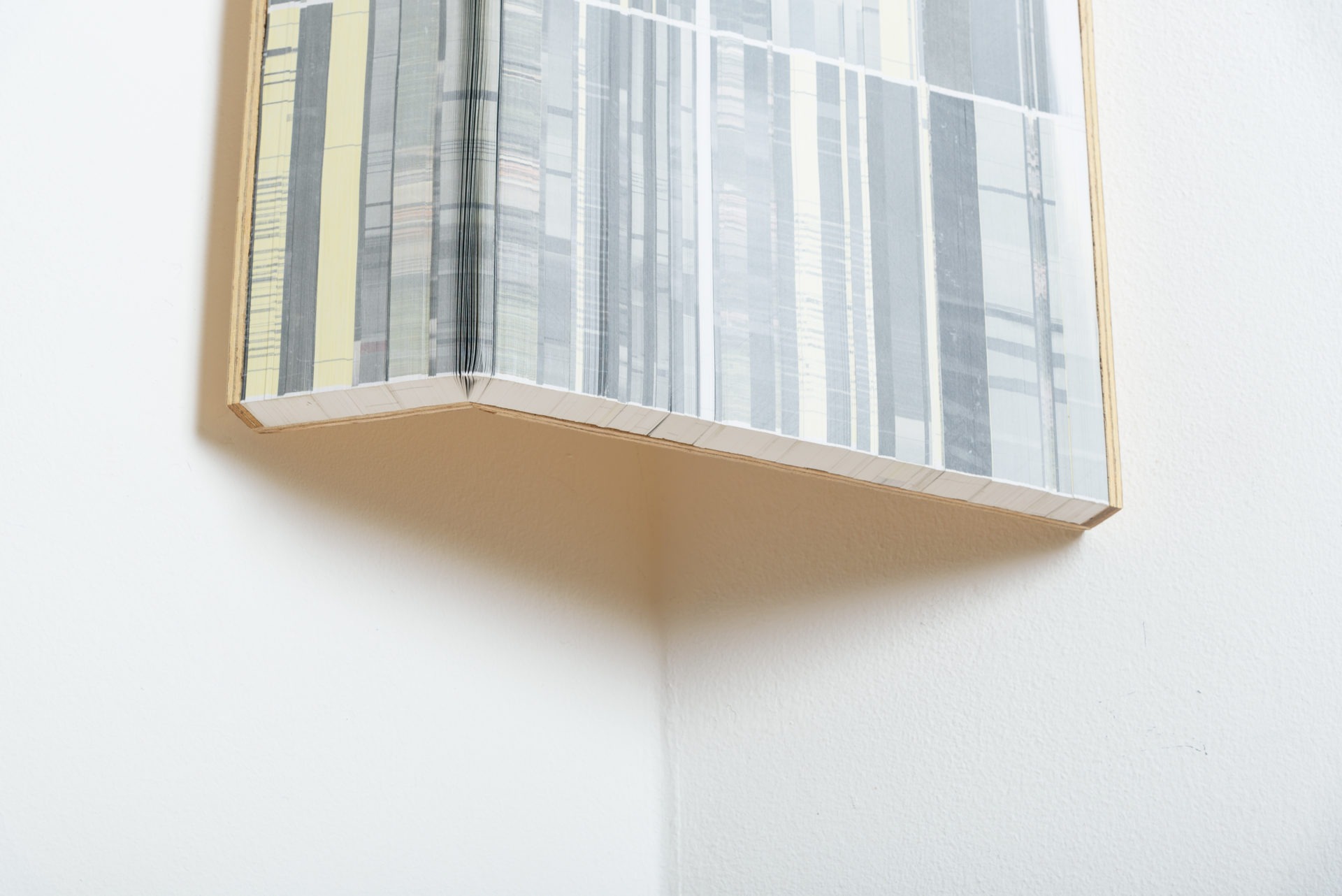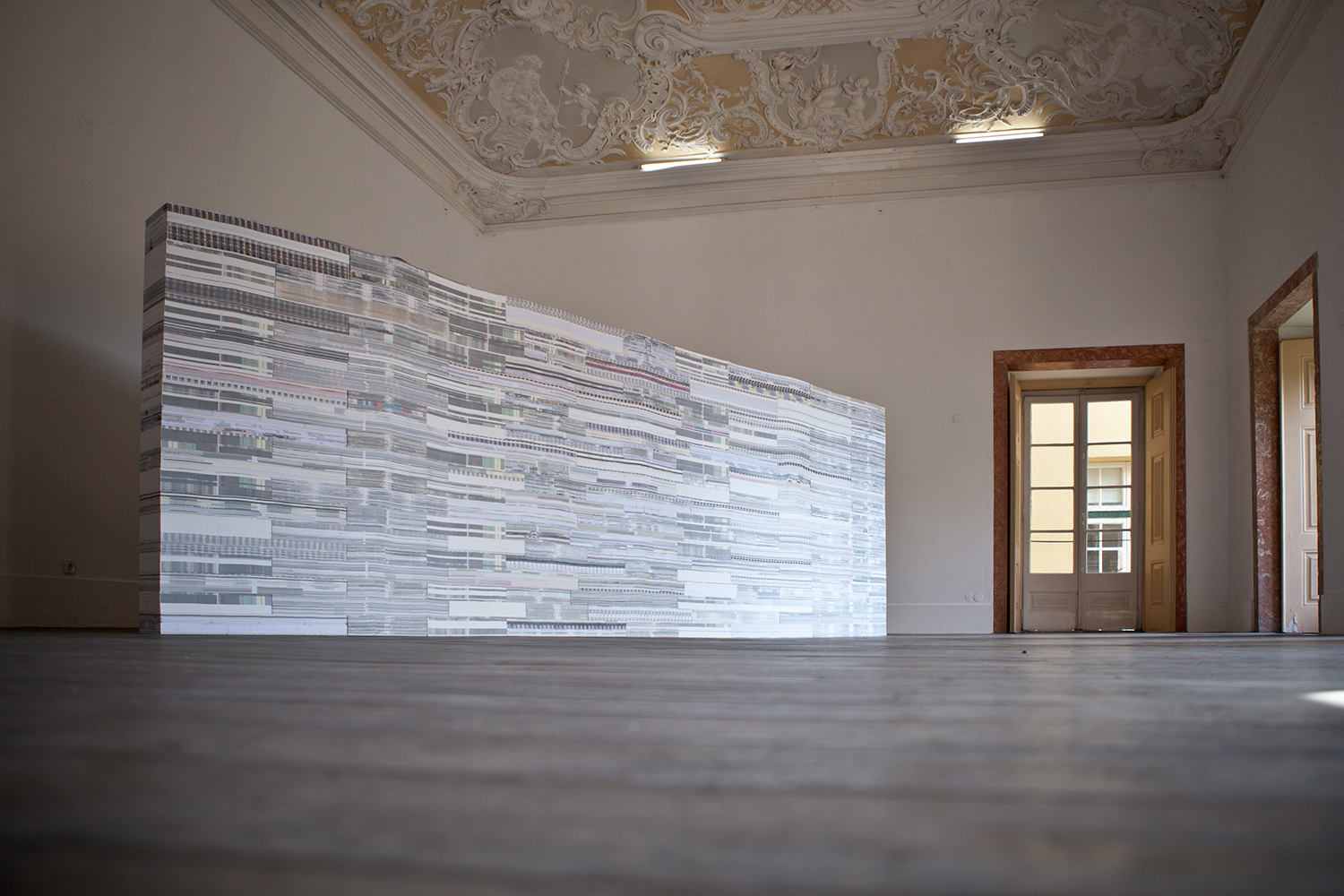Group show Victória sobre o Sol, curated by de António Olaio, Colégio das Artes UC, Coimbra
Tcherni Kvadrat
(regarding the exhibition “Victory over the Sun – From Black Square to Loophole”)
Often associated in the teleological tropism of Modernism, the cul de sac of self-referential painting, the autotelic and atheistic labyrinth of the pure anti-mimetic form, the Black Quadrangle (1915), Kasimir Malevitch’s landscape of inobjectivity, constituted a kind of preliminary emblem of the crisis between signifier and spirituality. One of the Pandora’s boxes referred to by Rosalind Krauss in her text Grids (1979), the square, which Malevich considered to be the image of modern life, would also be the blank slate needed to put painting at the service of a new relationship between image and theory. Artistic and philosophical system, therefore, this painting articulates visual scarcity (there is little to see) and semantic expansion / variation. The pictorial minimization opens the door to inconclusive and borderline hermeneutics: Malevitch witnesses the fear of the new and the liberating euphoria that took over his impressions and hesitations after finishing the painting. The image that does not correspond to a square at all, (the sides are neither parallel nor equal), is born initially from his Allogism, a pictorial cube-futuristic avatar of “Zaoum”, from the transrationality of his friend, the modernist Russian poet Velimir Khlebnikov; but it results mainly, as an experience of chance, of the unforeseen, of the countless scenic studies for the opera Victory over the sun (1913) by Mikhail Matiouchine.
It will be at exhibition 0.10 – the last futuristic exhibition that took place at the Nadieja Dobytchina Gallery from December 1915 to January 1916, in Petrograd (one of the most visited avant-garde art exhibitions with over 5000 visitors in such a short period) that Malevitch will finally exhibit already as painting “Tcherni kvadrat” (Black quadrangle). Both his suprematist room and Tatlin’s singing counter-reliefs constitute the epilogue of a historical dependence on the post-impressionist and symbolist Gaulocentric visuality and the definitive emancipation of the Russian avant-garde artists in relation to the futuristic poetic and plastic experience.
Inert emblem, turmoil and organization, taciturn membrane, all-swallowing magnetic knock-out, return to the origins of the pictorial, whatever the Quadrangle means, whatever the relationships that are established, the surface is there, expectant: a shape to search for meaning. And it was not only by iconoclastic derision that Malevitch placed this painting in the place where traditionally in the entrances of Russian houses of orthodox Christian creed the icon of the sacred triangle was placed and where the tenants turned when they entered.
A secular painting occupies the parietal niche reserved for the divine. And this transference communicates to us that we are facing a historical event that is no longer limited to alterity and the tradition of painting, but to the performative role of Art in the world of the living, in the transformation of that world, in the onslaught of its magnetic nothingness, against sensorial, cultural, rationalistic commonplace of surface-life.
Art is no longer an emanation of religious absolutism; Art is, in its new attributes, an absolutism per se, which represents itself as the “compendium” of a new exteriority of the world. With this anthropo-ethical claim, Malevitch aspired for the work of art to overcome the failed event and its remission in mere ornament. Indeed, all elements of Malevitch’s suprematist leadership, his demiurgical concerns, the intrinsic association between invention and secrecy, conceptual originality and expressive austerity, the seclusion of Art in an excessive and almost hermit form (the “desert of inobjectivity”, of inexpression ) can also be integrated in this “desperate compulsion to escape the abstract equality of things” that Theodor Adornoe speaks of maintaining the illusion of the unique, the different, the inimitable, in the world of mechanization and repetition.
In a 1922 conference in Berlin, entitled “The conquest of Art” El Lissitzky, the “Lenine” of Suprematism, approaches the Black Quadrangle in terms that emphasize it as an authentic program of action, a program of posterity and irreversibility, a tectonic commotion “et sic in infinitum”, to infinity: “(…) He wanted to reduce all forms, all paintings to zero. For us, however, this zero was a transition point. When we have a series of numbers coming from infinity … 6,5,4,3,2, 1 and reaching zero right afterwards we have an ascending line of numbers that return to infinity 1,2,3,4,5,6… This line expands on the other side of the painting. It was said somewhere that the centuries brought painting to this square and that nothing is found here. We say. However, if on this side the square slab blocked the already narrow painting channel, but on the other side, on the other hand, it became the foundation stone for the new spatial construction of reality. ” It is on this other side of the suprematist quadrangle and in a remote position from zero, that we define the curatorial intention of this exhibition.
Pedro Pousada, 2018









